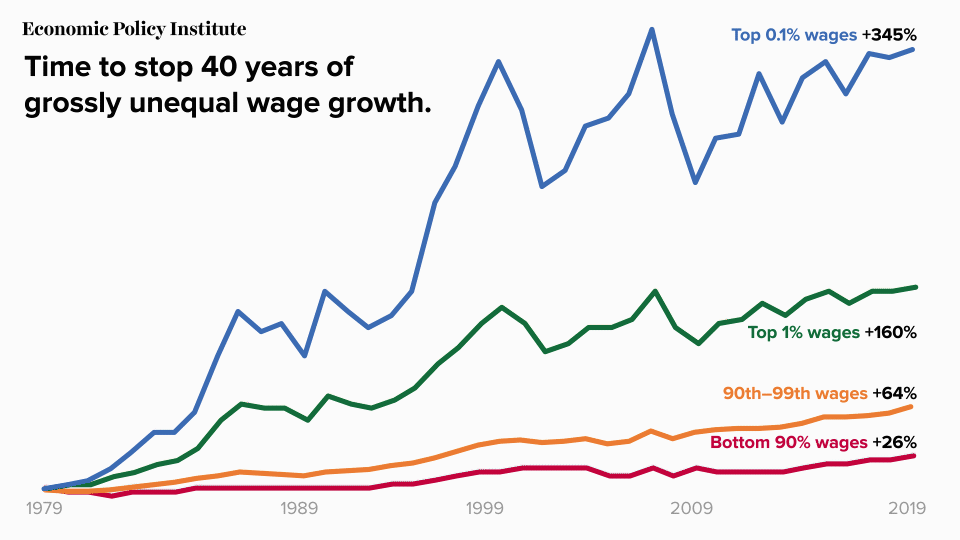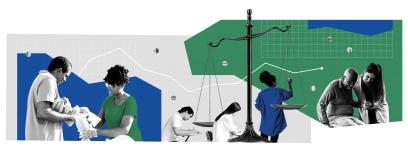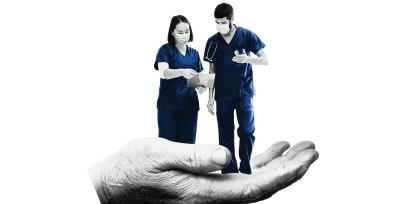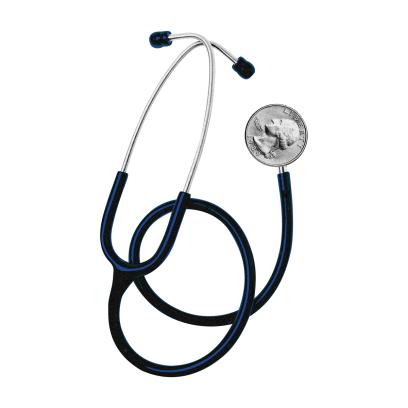When the coronavirus pandemic arrived, the United States was already deeply unequal. Before the pandemic, 140 million Americans were poor or near poor,* living just one emergency above the poverty line. The 140 million included approximately 60 percent of Black, non-Hispanic Americans (24 million), 64 percent of Hispanic Americans (38 million), 60 percent of Indigenous Americans (2 million), 40 percent of Asian Americans and Pacific Islanders (8 million), and 33 percent of white Americans (66 million).2
Indeed, the pandemic spread rapidly in the fissures that previously existed because of racism, poverty, and profound inequality—and our refusal to acknowledge the full extent of these injustices in our public discourse or public policies. Alongside enduring inequities in the social determinants of health (including access to safe and affordable housing, clean air and water, healthful foods, quality education, and public transportation), the economic effects of the pandemic hastened even greater insecurity, especially for poor people of color. It is estimated that the 140 million grew to nearly 150 million during the pandemic,3 but most of these people remain uncounted among the poor and therefore excluded from many of our policies. At the same time, our policy responses to this widespread insecurity are constrained in part because we do not have an accurate account of it.
This inequality in the United States did not happen suddenly and cannot be explained as the consequence of individual failures; rather, decades of public policies brought us to this point, making the rich richer at the expense of everybody else. When we fail to meet basic needs for food, housing, and healthcare for everyone, when we fail to invest in education, safe communities, and fair elections, the health and well-being of our entire nation is compromised. We waste our most precious resources, yes. But more than that, we allow the potential of individuals, families, and communities—and the full potential of our nation and its ideals—to go unrealized.
This article is a collaboration between the Poor People’s Campaign: A National Call for Moral Revival—a moral movement rooted in the legacy of Rev. Dr. Martin Luther King Jr. that is organizing around the needs and demands of the 140 million in 45 states—and the Economic Policy Institute (EPI)—an independent, nonprofit, nonpartisan organization that uses economic research and analysis to understand and improve the economic conditions of workers and their families. In this article, we evaluate the public policies that shaped the preexisting conditions of the pandemic, policies that were by no means accidental or morally neutral, and lay out the policies that we need to counter and reverse the status quo, including the heightened suffering from the pandemic.
The Roots of the Pandemic Recession
The economic damage done by COVID-19 in the United States was amplified by the decades of policy choices leading up to it. The early months of the pandemic precipitated a historically large and damaging economic shock, far beyond the 2008–09 Great Recession and even the 1929–39 Great Depression. Because COVID-19 spread so efficiently in face-to face situations, economic sectors that relied on in-person interactions—including food service, retail, hospitality, education, and many health sectors, among others—were essentially closed when social distancing measures came into force. These widespread closures resulted in a stunning collapse of economic activity and employment. In March and April of 2020 alone, 22 million workers lost their jobs.4 Along with lost income, an estimated 12 million people also lost employer-sponsored health insurance.5
The recovery from this shock has been uneven. Although recessions always hit low- and middle-wage workers the hardest, by the end of 2020 the lowest-wage sectors were still down by nearly 8 million jobs while the highest-wage sectors actually gained about 1 million jobs.6 Within low-wage sectors, Black, Hispanic, and women workers have been disproportionately impacted.7 Recovery could be a long time coming for many of these workers.8
This overwhelming impact on low-wage work reflects an economy that has become dramatically more unequal over the past 40 years. As summarized in the figure below, huge swaths of the US workforce have been disempowered since the 1970s.9 Productivity—defined as the amount of income generated in an average hour of work in the entire US economy—has grown consistently over this time. But instead of going to typical workers, the benefits of our increasingly productive economy have gone mainly to corporate and business executives and wealth owners (e.g., stock market investors). Therefore, what this figure really shows is the stark disparity between what workers are paid and what they could be paid.
If typical workers’ pay had kept up with productivity growth over this time, there would have been no increase in inequality. In a very real sense, that “wedge” between productivity and pay is the extent of inequality in the US economy.
This inequality becomes more stark as we move down the wage distribution. Wage growth has been most stunted for the lowest-wage workers. Workers at the 10th percentile saw only 3.3 percent cumulative growth in hourly wages between 1979 and 2019;† however, workers at the 50th percentile saw 15.1 percent growth over that period, and workers at the 90th percentile saw 44.3 percent growth.10 As stark as these disparities are, at the very top of the earnings distribution, the gaps become enormous. Analyzing annual earnings,‡ EPI finds that while wages for the bottom 90 percent of workers grew 26 percent, workers at the 99th percentile saw 160 percent wage growth and those at the 99.99th percentile saw 345 percent wage growth.12

The Moral and Economic Costs of Poverty and Inequality
Rising inequality is associated with slower overall economic growth and more persistent poverty. As shown in the figure below, EPI has estimated that if we had not experienced rising inequality since the late 1970s—if the fruits of our productivity had continued to be shared more broadly, as they were in previous decades—the poverty rate would have dropped to zero by the year 2000.13
This is not the trajectory we have followed. Instead, poverty and economic insecurity have been allowed to grow alongside the concentration of wealth in fewer and fewer hands, with real consequences:
- Families are hungry. In 2019, more than one in 10 US households faced food insecurity at some point during the year, and households with children were even more likely to not know where their next meal was coming from. Food insecurity affects Americans of all races and ethnicities; however, white households faced food insecurity at lower rates (7.9 percent) than Black (19.1 percent) or Hispanic (15.6 percent) households.14
- People’s health is sacrificed. A 2018 survey15 found that 87 million Americans had inadequate health coverage—they were either uninsured (roughly 24 million) or underinsured, putting them at risk for medical debt, onerous health cost burdens, and poor health outcomes, including deaths that could have been prevented.16 Most of these people are either unable to work or are in low-wage jobs that do not offer insurance and do not pay enough for workers to purchase insurance. They also disproportionately live in states that have refused to expand Medicaid. In 2019, 94 percent of those in the top 10 percent of wage earners—but only 24 percent of those in the bottom 10 percent of wage earners—had access to health insurance through their employer.17
- Education is compromised. There are large gaps in educational achievement between children from the families with the fewest resources and those with the most. The strong relationship between income inequality and educational inequality perpetuates lack of opportunity, decreases social mobility, and “represents a societal failure that betrays the ideal of the ‘American dream.’ ”18
- Safe, affordable housing is elusive for many families. More than 60 percent of workers do not earn enough to afford a two-bedroom rental home (with “affordability” defined as costing no more than 30 percent of income); the median wage is just barely sufficient for a one-bedroom rental.19 And there is no place in the country where a full-time worker earning the federal minimum wage comes even close to being able to afford a two-bedroom apartment.20
The sum total of these impacts is devastating: every year, approximately 250,000 people die from poverty and income inequality.21
This human tragedy goes largely ignored, which allows inequality to grow unchecked and does not make good economic sense. In today’s severely unequal economy, economic growth is slower, downturns are more severe and painful, and our economy fails to reach its full potential. When low-wage workers get a raise, they generally put that money right back into the economy, spending it on things their families need—which in turn supports jobs and economic growth. In contrast, high-wage workers are much more likely to save any extra dollars they receive.22
Maintaining this vastly unequal economy has costs. For example, the aggregate costs of child poverty, considering everything from child homelessness to crime and health costs to lost economic productivity, is estimated at $1 trillion per year.23 Similarly, barriers to full labor market participation and compensation for women and people of color were estimated at $2.6 trillion of our gross domestic product in 2019.24 But the full extent of such losses is impossible to quantify. Children lifted out of poverty and protected from its destabilizing effects are potential teachers, firefighters, healthcare workers, researchers, innovators, caring family members, good neighbors, loving parents, and engaged citizens. People performing valuable—but chronically underpaid—services, such as cleaning buildings, stocking grocery store shelves, and caring for elderly Americans, deserve to be paid fairly, to receive necessary benefits like sick leave, and to be protected at work; they should not live in poverty or near poverty, wondering how they will pay their rent and buy food or what will happen if they get sick. And everyone living in our society must have some adequate foundation of economic security if they are unemployed or to fall back on in times of crisis.
How We Got Here
The wedge between pay and productivity is no accident. It is the result of intentional policy and fiscal choices designed to redistribute economic leverage and bargaining power away from typical workers. There was no single piece of legislation that did this; instead, it was the accumulation of dozens, if not hundreds, of choices made in the form of legislation, regulatory changes, and administrative and judicial decisions that consistently allowed the wealthy to reap the vast majority of the benefits of economic growth.25
As corporations and employers have been prioritized over communities and employees, anti-poverty programs have been consistently underfunded, while spending on war, prisons, and immigration enforcement has been steadily increased. These choices were only possible because our democracy has been weakened by voter suppression, keeping those who are most impacted by these skewed priorities out of our political system.
Here we describe six policy choices and three fiscal choices that have promoted the steady growth of inequality over the last 40 years.
Policy Choices
Chronic excessive unemployment has been enabled by austerity-driven macroeconomic policies. The Federal Reserve Board (Fed) has the dual mandate to pursue the maximum level of employment consistent with stability in inflation. However, post-1979, Fed policymakers have too often guarded excessively against inflation, with grave consequences: they cut recoveries short before the benefits had reached low- and moderate-wage workers.§
Further, during recessions, Congress has too often failed to pass needed recovery measures. We saw this most starkly in the aftermath of the Great Recession, when economic recovery was actively held back by a Republican-led US Congress and Republican state governments that imposed steep austerity measures. Public spending grew more slowly in the recovery following the Great Recession than during any other recovery since World War II.26 Federal aid to state and local governments was stopped too soon, and Republican governors embraced austerity as an economic strategy to further reduce government outlays. This throttling of state and local government spending delayed a full recovery (i.e., a return to 2007’s pre-recession unemployment levels) by four full years.27
Corporate-driven globalization has shifted economic leverage away from low- and middle-wage workers. Globalization was expected to depress wage growth for the majority of American workers, but policy failures have significantly amplified these damaging effects, turning it from a manageable challenge into a deep economic wound. Globalization has been used—at the behest of corporations—as a tool to shift economic leverage and power away from low- and middle-wage workers. Non-college-educated workers have seen their wages cut and their jobs become less secure, while multinational corporations and highly credentialed professionals have seen their incomes and market power carefully protected. Contrary to stereotypes, these effects are not just a problem for white manufacturing workers in the Rust Belt (an area of industrial decline stretching from the Northeast to the Midwest); they impact the majority of workers and likely fall disproportionately on the wages of nonwhite workers.28
Collective bargaining rights have been eroded. The National Labor Relations Act, which is supposed to protect the right of private-sector employees to form a union and bargain collectively, has increasingly failed to safeguard workers’ rights and has been inconsistently enforced, with too many loopholes that employers have been able to exploit. Unions address inequality on multiple levels. Unions help to narrow wage gaps, relative to white men, for women and for Black and Hispanic workers.29 When we had higher levels of unionization, the top 10 percent of wage earners commanded a lower share of total income in the United States, as seen in the figure below.30 But, as also seen in the figure, union membership has declined over the last several decades, accompanied by rising inequality. This erosion of collective bargaining has lowered the median hourly wage by $1.56, which adds up to $3,250 per year for a full-time worker.31
The bulk of this decline has taken place in the private sector, as unions have faced intense opposition from private employers; however, public-sector unions have been increasingly under attack in recent years. For example, in Wisconsin, public-sector union membership rates dropped from 50.3 percent in 2011 to 24.4 percent in 2018, following the 2011 passage of Act 10, which undercut collective bargaining rights for public-sector workers in the state.32 The 2018 Supreme Court decision in Janus (which allows nonmembers to benefit from collective bargaining without paying any union fees) poses a major threat to public-sector unions. Although unions like the AFT remain strong, the full extent of Janus’s impact remains to be seen.33
Labor standards have been weakened. Key changes include a steady decline in the value of the minimum wage, insufficient protections against unpaid overtime and wage theft, and inadequate resources dedicated to enforcement to help workers whose employers have underpaid them or failed to pay them altogether.
The federal minimum wage was meant to guarantee a living wage and protect workers from being exploited, but it has been raised in only an ad hoc manner since its inception in 1938 and infrequently since the late 1970s. In recent decades, its real value has declined by a third. In 2021 dollars, the real (inflation-adjusted) value of the hourly minimum wage has dropped from its high of $10.59 in 1968 to $7.34 in 2020.
Making matters worse, employers are able to get away with misclassifying employees as “independent contractors”; those workers lose out on rights and benefits associated with being an employee, such as the protection of minimum wage and overtime laws, workers’ compensation, and health insurance benefits—amounting to a significant savings for employers. Employers who misclassify workers also don’t contribute to those workers’ Social Security and Medicare (the workers must pay the entire tax). Misclassification is harmful to workers and profitable for employers—and there are few disincentives to stop employers from doing it.34
Immigrant workers, especially those who are undocumented, are particularly vulnerable. US immigration policy has effectively created “labor standards free zones,” allowing for wage suppression and other forms of exploitation—particularly against migrant workers. This, in turn, suppresses wages for US workers across the board.35
Employer actions to limit employees’ rights have been allowed to grow unchecked. Many employers require their employees to sign away certain rights on the first day of work as a condition of employment (for example, through noncompete and forced arbitration agreements).36 The use of such strategies to undercut workers’ rights has been allowed to grow without intervention from policymakers, hurting the economic position of workers.
New corporate structures that consolidate market power have been tolerated by policymakers. New and emerging corporate structures have put further pressure on workers’ rights, depressed wages, and made it difficult for workers to hold their employers responsible for labor law violations or to collectively bargain over wages and working conditions. These include workplace “fissuring” (e.g., subcontracting even core services and treating workers as independent contractors),37 industry deregulation, privatization, buyer dominance affecting entire supply chains, and increases in the concentration of employers.38
Fiscal Choices
Inadequate poverty measures have led to inadequate poverty programs and misguided national priorities. The federal government’s official poverty measure was developed in the 1960s based on food and expense data from the 1950s. Other than being adjusted for inflation, it has remained essentially the same for over 50 years, even though the costs of many basic necessities have outpaced inflation and other costs, like healthcare and childcare, were not even imagined at the time. Today, the poverty thresholds are approximately $12,880 per year for a single person and $26,500 for a family of four. When compared against the contemporary costs of basic necessities, these amounts are absurdly low. Even the government’s Supplemental Poverty Measure, which is an improvement, is still too low given the costs of living today.**
Because anti-poverty programs are based on these measures, they have never met the need at hand—and they have even been scaled back. The largest reduction in cash assistance to low-income families came with the passage of the Personal Responsibility and Work Opportunity Reconciliation Act in 1996, which eliminated Aid to Families with Dependent Children (AFDC; a program created under the Social Security Act of 1935) and replaced it with Temporary Assistance for Needy Families (TANF).39
TANF not only ended the entitlement of a right to welfare but also drastically reduced resources available to families in poverty and imposed unrealistic work requirements on recipients. Former TANF beneficiaries forced into the labor market faced low wages, irregular schedules that made work-life balance nearly impossible, and precarious work that often provided no employee benefits.40 These changes curtailed the reach and impact of our welfare programs. In 1996, AFDC reached 68 percent of poor families,41 far more than the 23 percent of poor families that TANF reached in 2019. In all but three states, TANF benefits have declined since 1996 in real value, with monthly benefits at or below two-thirds of the federal poverty line.
These cuts mirrored cuts to other federal programs and assistance. The affordable housing stock, for example, has declined by 60 percent since 2010,42 and 10,000 public housing units are lost every year.43 Consequently, only about one in four people eligible to receive federal housing assistance actually receives it.44 Likewise, federal support for basic needs, such as water or sanitation, has declined precipitously. From its peak in 1977, federal assistance to local water systems has fallen 77 percent,45 even as pipes are aging and water, sanitation, and wastewater infrastructure investment needs are rising. This has led to higher water rates, mass water shutoffs, and toxins like lead leaching into water sources, compounding other health crises in poor and low-income communities.
Alongside failures to meet these fundamental needs of tens of millions of people are choices to allocate our public resources to war and war preparedness, mass incarceration, cruel immigration enforcement, brutal policing, and polluting sectors of the economy (e.g., oil and gas production). These policy decisions compromise our quality of life and life itself, both in America and around the world.46 Indeed, the US Department of Defense is the largest institutional emitter of greenhouse gases in the world, and its overseas operations have the worst environmental impacts.47 And our expanded fossil fuel infrastructure poses serious threats to the climate, water quality, and public health through leakage as well as catastrophic spills, which are mainly concentrated in poor and low-income communities.48
Tax policy has favored the wealthy and powerful. Our tax code has been riddled with loopholes and giveaways to rich, large corporations and Wall Street for years, but the 2017 tax cuts grew their wealth enormously. The new law cut the top marginal tax rate for individuals from 39.6 to 37 percent and privileged income from investments over income from work by making the top base rate on income from capital gains just 20 percent. This was a huge giveaway to the richest 1 percent, who hold more than half of national wealth invested in stocks and mutual funds.49
The corporate tax rate was also cut back from 35 to 21 percent, a move that will cost $1.3 trillion over 10 years.50 Although corporate profits were already near record highs, the tax break was justified to boost investment and job creation. However, in the first few months after passage of the new tax law, US corporations announced nearly $1 trillion in stock buybacks,51 while real investment in plant and equipment began quickly cratering.52 As a 2021 study concluded, these so-called trickle-down tax policies really only benefit the wealthy and therefore increase inequality.53
Voter suppression has marginalized the concerns of poor and low-income Americans. The concerns of poor and low-income people—who make up more than 40 percent of the population—are not marginal issues, but their concerns have been marginalized within the national political discussion. A 2020 report published by the Poor People’s Campaign finds that among adults eligible to vote, people with low incomes are significantly less likely to vote than people with higher incomes, which means their interests are not well represented by policymakers.54 A long and ongoing history of voter suppression is certainly a major factor—if not the factor—at the root of this low voter turnout. That suppression is often racially motivated and is used to enact policies that increase inequality and negatively impact the 140 million Americans living in or on the edge of poverty.
There has been a dramatic rise in voter suppression since 2013, when the Supreme Court gutted key protections of the Voting Rights Act of 1965 in Shelby v. Holder. One of these protections was the preclearance requirement, which mandated that the US Department of Justice (DOJ) investigate and approve any changes to voting laws in jurisdictions with a noted history of racist voter suppression. Up until Shelby, preclearance had been effectively used for decades. In North Carolina alone, the DOJ had objected over 60 times to more than 150 changes to voting laws on the grounds that they were racially retrogressive.
Since 2013, there have been hundreds of voter suppression laws introduced in nearly every state in the country, and two presidential elections have taken place without the full protections of the Voting Rights Act.55 In fact, in just the first six months following the 2020 election, 47 states introduced over 380 laws to suppress the right to vote.56 Although Black, Hispanic, Indigenous, and poor people are often the direct targets of these laws, the impact of these laws is felt among the broader population of poor and low-income people.
To fight back, a multiracial democracy must rise up to demand better economic and social policies.
Transformative Policies
Because policy and fiscal choices have been used to perpetuate and deepen inequality, they can also be used to usher in an era of greater equality and equity. Here we offer 10 discrete, ambitious policy changes that would be transformative, especially for the 140 million poor and low-income people who were facing significant challenges even before COVID-19.
1. Prioritize “High-Pressure” Labor Markets
Policymakers must commit to ending recessions and restoring “high-pressure” labor markets (in which unemployment is very low) as quickly as possible. This would represent a fundamental break with decades of past practice, when policymakers’ prime concern was very low inflationary pressures, which led them to engineer (or at least tolerate) excessively high unemployment.57 High-pressure labor markets fundamentally change the bargaining dynamic between workers and employers, forcing employers to go begging for workers and increasing workers’ leverage over wage negotiations.
2. Raise the Federal Minimum Wage
In 1963, the March for Jobs and Freedom (a.k.a. the March on Washington) demanded a federal minimum wage of $2 per hour. Adjusted for inflation, this would be roughly $15 today. Adopting the march’s demand and boosting the federal minimum wage to $15 by 2025 would give a raise to 32 million workers, with Black workers and women seeing the greatest gains. If the federal minimum wage had kept up with productivity since its inception, it would be over $23 per hour today. A labor market is only as strong as its floor, and the federal minimum wage needs to be significantly strengthened to bolster this floor.58
3. Uphold the Right to Form and Join Unions
We should act to close loopholes in current labor law to protect workers from employers’ anti-union tactics. Passage of the Protecting the Right to Organize (PRO) Act would strengthen workers’ rights to form unions and negotiate with their employers for better wages and working conditions. Specifically, it would reform our nation’s labor law so that private-sector employers are no longer able to intimidate workers seeking to unionize or perpetually stall union elections and contract negotiations.59 Further, passage of the Public Service Freedom to Negotiate Act would give public-sector workers the ability to form unions and engage in collective bargaining on the federal level.60 Currently, more than half of the states in the United States lack comprehensive collective bargaining laws for public-sector workers like teachers.61
4. Reform Unemployment Insurance
We should follow the lead of other rich countries and greatly expand the share of the unemployed who receive unemployment insurance (UI) benefits in normal times while also making normal UI benefits significantly more generous. A transformed UI system can be a revolutionary change for US workers, significantly blunting the anxiety and deprivation inflicted by even short spells of joblessness.
5. Provide Universal Healthcare
The COVID-19 shock has been only the latest crisis highlighting the perversity of tying access to health insurance coverage to specific jobs. Nearly every other rich industrialized nation has delinked health insurance and the labor market and has instead made access to insurance coverage a universal right. The United States should join this community and provide coverage to all—and, more importantly, this coverage should not become degraded or ruinously expensive whenever one loses a job. The steps forward made by the Affordable Care Act have exposed an important truth: we need substantial increases in publicly provided insurance, beginning with the expansion of Medicaid. Universal healthcare not only would have profound effects on the economic security of households in the United States but also could boost wages and jobs, leading to labor markets that match jobs and workers more efficiently.62
6. Provide Universal Access to Vital Goods and Services
High-quality child and elder care, and early childhood and higher education, are examples of vital goods and services that are out of reach for too many families. These should also be universally accessible through public programs. The upfront costs of providing these are considerable, but the payoff over time to society is huge.63 Some studies find that investments in top-notch early childhood education, for example, are more than 100 percent self-financing; when the participants reach adulthood, they are more productive, have higher wages, pay higher taxes, and, with a strong early foundation of systemic supports, are less likely to end up in the criminal justice system. High-quality elder care can allow a large expansion in the labor force of adult women. And access to free, or at least more affordable, higher education would produce a better-prepared workforce while reducing student debt.
7. Create a New Poverty Measure and Expand Social Welfare Programs
In order to respond to the changing, post-pandemic economy, we need to have accurate measures of poverty and economic insecurity to inform social welfare programs that truly meet all basic needs. Instead of the current official and supplemental (yet still inadequate) poverty measures, the federal government should establish a new poverty measure that reflects what it takes to have a decent standard of living in the country today. This new measure should provide the basis to expand public benefits, including cash assistance and other programs to guarantee adequate incomes, housing, food, water, and other human needs.
8. Invest in Safe Communities
Recent years have seen a growing recognition that the brute force model that combines aggressive policing and mass incarceration has failed as a mechanism for guaranteeing public safety. We need a new model that rests on investments in health, education, and opportunity for people in chronically under-resourced neighborhoods. These investments can include pilot programs that give primary responsibility for ensuring public order and safety—and the investment to back it up—to community-based organizations. Many community-based organizations already do much of this work, building safe public spaces and intervention programs to prevent violence or crime. These organizations are forced to do this work on the cheap, but their work is often effective and, if financed publicly, could build trust rather than antagonism between communities and those tasked with providing public safety.
9. Tax the Rich and Corporations
In the 30 years following World War II, the fruits of economic growth were far more evenly distributed and tax rates for the rich and corporations were substantially higher.64 These higher tax rates provided revenue for needed public spending and reduced the incentive for privileged economic actors to rig the rules of the market to tilt more gains their way. We should raise taxes progressively to help finance needed public investments and safety net spending and to reduce the payoff to exercising market power. This market power should also be confronted directly with legislation and regulation, but as a backstop we should tax its payoff.
10. Protect and Expand Voting Rights
For any of the policies above to be advanced, we must protect and expand voting rights, especially for poor people and poor people of color. A motivating belief of the Poor People’s Campaign is that the votes of poor and low-income Americans can make a difference in our elections. And, in fact, the increase in turnout among these voters in the 2020 presidential election—six million more than in 2016—may have tipped the scales.65 But voter suppression laws continue to proliferate across the states. Pushing back begins with restoring the full power of the Voting Rights Act by updating the preclearance formula to cover all jurisdictions—those with deep-rooted histories of voter suppression as well as those that have more recently passed voter suppression laws or used these tactics. Other key changes include making Election Day a national holiday, establishing a fair redistricting process that eliminates racist and political gerrymandering, increasing polling locations, modernizing voter registration (with online, same-day, and automatic registration), implementing early voting and mail-in voting in every state, and ending felony disenfranchisement.
If America does not address the problem of inequality by making visionary social and economic choices, the health and well-being of the nation will continue to decline. We need long-term policies, enshrined in law, that establish justice, promote the general welfare, reject decades of austerity, and build strong social programs that lift society from below.
Such policies will help us not only live up to the constitutional and moral commitments this country was founded on but also revive our economy. By organizing against the policies that have pushed millions of people out of the political narrative and increasingly out of any economic power, we can begin a path to recovery that will reduce inequality, increase workers’ power, and morally and economically benefit us all.
The Rev. Dr. William J. Barber II is the president and senior lecturer of Repairers of the Breach and a co-chair of the Poor People’s Campaign: A National Call for Moral Revival. Shailly Gupta Barnes is the policy director for the Kairos Center for Religions, Rights, and Social Justice and the Poor People’s Campaign. Josh Bivens is the director of research at the Economic Policy Institute (EPI), where Krista Faries is an editor. Thea Lee is the former president of EPI. The Rev. Dr. Liz Theoharis is a co-chair of the Poor People’s Campaign and the director of the Kairos Center.
*“Americans” refers to all US residents, regardless of citizenship status. “Poor or near poor” is defined as having household income below 200 percent of the poverty threshold, per the Supplemental Poverty Measure. It is widely recognized, though, that both the Supplemental Poverty Measure and the even more miserly Official Poverty Measure set far too low a standard for economic security.1 (return to article)
†We do not include 2020 data in this analysis because the 2020 numbers are distorted by high job loss among low-wage workers during the coronavirus pandemic. (return to article)
‡As income inequality grows, it is increasingly difficult to measure wages of high earners using hourly wage data from the Bureau of Labor Statistics.11 EPI therefore uses annual wage data from the Social Security Administration when analyzing disparities between the highest earners and the bottom 90 percent. (return to article)
§The “maximum level of employment,” which we also refer to as a “tight labor market” and a “high-pressure market,” occurs when the demand for workers is strong enough to push the unemployment rate to very low levels. When the labor market is tight, workers across the board are empowered to demand and receive pay increases, and greater pressure is put on employers to reduce discriminatory barriers to hiring and pay practices.(return to article)
**The Supplemental Poverty Measure (SPM) takes into account out-of-pocket expenses for food, clothing, housing, and utilities; government transfers like Supplemental Nutrition Assistance Program benefits (i.e., food stamps); and the earned income tax credit. It is also adjusted for geography and housing tenure. In 2019, the SPM threshold for a family of four was anywhere from just over $21,000 for a home-owning household in nonmetro Iowa to nearly $37,000 for a renting family in Los Angeles. These values are still too low. Fair market rent for a two-bedroom apartment in Los Angeles is about $2,000 per month (according to the US Department of Housing and Urban Development’s FY 2021 Final Fair Market Rents Documentation System), which would take up two-thirds of the SPM threshold for a family of four. (return to article)
Endnotes
1. For a good overview of the flaws of these measures, see S. Fremstad, The Defining Down of Economic Deprivation: Why We Need to Reset the Poverty Line (New York and Washington, DC: Century Foundation, September 2020).
2. See S. Barnes, “Explaining the 140 Million: Breaking Down the Numbers Behind the Moral Budget,” Kairos Center for Religions, Rights, and Social Justice, June 26, 2019.
3. L. Giannarelli, L. Wheaton, and K. Shantz, 2021 Poverty Projections (Washington, DC: Urban Institute, Income and Benefits Policy Center, February 2021).
4. E. Gould, “What to Watch on Jobs Day: The Giant Job Deficit Left by the Pandemic,” Working Economics Blog, Economic Policy Institute, February 4, 2021.
5. J. Bivens and B. Zipperer, Health Insurance and the COVID-19 Shock: What We Know So Far About Health Insurance Losses and What It Means for Policy (Washington, DC: Economic Policy Institute, August 2020).
6. E. Gould and J. Kandra, Wages Grew in 2020 Because the Bottom Fell Out of the Low-Wage Labor Market (Washington, DC: Economic Policy Institute, February 2021).
7. “Written Testimony of Heidi Shierholz, Senior Economist and Director of Policy, Economic Policy Institute,” U.S. Equal Employment Opportunity Commission, Meeting of April 28, 2021—Workplace Civil Rights Implications of the COVID-19 Pandemic, April 28, 2021.
8. A. Tappe, “We’re Never Going Back to the Old Economy,” CNN Business, November 17, 2020.
9. EPI analysis of unpublished Total Economy Productivity data from the Bureau of Labor Statistics (BLS) Labor Productivity and Costs program, and wage data from the BLS Current Employment Statistics, BLS Employment Cost Trends, BLS Consumer Price Index, and Bureau of Economic Analysis National Income and Product Accounts. Data are for compensation (wages and benefits) of production/nonsupervisory workers in the private sector and net productivity of the total economy. “Net productivity” is the growth of output of goods and services less depreciation per hour worked. For more details, see Economic Policy Institute, “The Productivity-Pay Gap,” May 2021.
10. See 2019 data in Gould and Kandra, Wages Grew in 2020 Because the Bottom Fell Out.
11. See C. Ingraham, “Income Inequality Is Rising So Fast Our Data Can’t Keep Up,” Washington Post, February 21, 2019.
12. L. Mishel and J. Kandra, “Wages for the Top 1% Skyrocketed 160% since 1979 While the Share of Wages for the Bottom 90% Shrunk,” Working Economics Blog, Economic Policy Institute, December 1, 2020.
13. Simulated supplemental poverty rate is based on a model of the statistical relationship between growth in per capita GDP and poverty that prevailed between 1967 and 1979. In the model, the Supplemental Poverty Measure is anchored to 2012 poverty thresholds, allowing for changes in poverty trends to be explained by changes in income and net transfer payments. See Fox et al. 2014 for technical detail. Analysis by Elise Gould and Daniel Perez of the Economic Policy Institute of L. Fox et al., “Waging War on Poverty: Historical Trends in Poverty Using the Supplemental Poverty Measure,” working paper no. 19789, National Bureau of Economic Research, January 2014, doi.org/10.3386/w19789; Bureau of Economic Analysis, “National Income Product Accounts (NIPA) Table 7.1: Selected Per Capita Product and Income Series in Current and Chained Dollars,” US Department of Commerce, apps.bea.gov/iTable/iTable.cfm?reqid=19&step=2; and Columbia Population Research Center, “Historical Supplemental Poverty Measure Data Using the Current Population Survey,” February 14, 2019, bit.ly/3xxoMLU. Analysis using methodology from S. Danziger and P. Gottschalk, America Unequal (Cambridge, MA: Harvard University Press, 1995).
14. U.S. Department of Agriculture, Economic Research Service, “Food Security in the U.S.: Interactive Charts and Highlights,” ers.usda.gov/topics/food-nutrition-assistance/food-security-in-the-us/interactive-charts-and-highlights.
15. G. Galvin, “87M Adults Were Uninsured or Underinsured in 2018, Survey Says,” US News, February 7, 2019, citing S. Collins, H. Bhupal, and M. Doty, Health Insurance Coverage Eight Years After the ACA (New York: Commonwealth Fund, February 2019).
16. J. Tanne, “More Than 26,000 Americans Die Each Year Because of Lack of Health Insurance,” BMJ 336, no. 7649 (April 2008): 855.
17. US Department of Labor, Bureau of Labor Statistics, “Lower-Wage Workers Less Likely Than Other Workers to Have Medical Care Benefits in 2019,” TED: The Economics Daily, March 3, 2020.
18. E. García and E. Weiss, Education Inequalities at the School Starting Gate: Gaps, Trends, and Strategies to Address Them (Washington, DC: Economic Policy Institute, September 2017).
19. See Figure 3 in A. Aurand et al., Out of Reach 2020: The High Cost of Housing (Washington, DC: National Low Income Housing Coalition, 2020).
20. National Low Income Housing Coalition, “How Much Do You Need to Earn to Afford a Modest Apartment in Your State?,” Out of Reach 2020.
21. S. Galea et al., “Estimated Deaths Attributable to Social Factors in the United States,” American Journal of Public Health 101, no. 8 (August 2011): 1456–65.
22. J. Bivens, Inequality Is Slowing U.S. Economic Growth: Faster Wage Growth for Low- and Middle-Wage Workers Is the Solution (Washington, DC: Economic Policy Institute, December 2017).
23. M. Rank and M. McLaughlin, “Estimating the Economic Cost of Childhood Poverty in the United States,” Social Work Research 42, no. 2 (June 2019): 73–83, describing the impact of lost economic productivity, increased health and crime costs, and increased costs from child homelessness and maltreatment.
24. Federal Reserve Bank of San Francisco, “SF Fed Asks, ‘How Much Is Inequity Costing Us?,’” SF Fed Blog, February 4, 2021.
25. L. Mishel and J. Bivens, “Identifying the Policy Levers Generating Wage Suppression and Wage Inequality,” Economic Policy Institute, May 13, 2021.
26. J. Bivens, Why Is Recovery Taking So Long—and Who’s to Blame? (Washington, DC: Economic Policy Institute, August 2016).
27. J. Bivens, “A Prolonged Depression Is Guaranteed Without Significant Federal Aid to State and Local Governments,” Working Economics Blog, Economic Policy Institute, May 19, 2020.
28. For further discussion, see J. Bivens, Adding Insult to Injury: How Bad Policy Decisions Have Amplified Globalization’s Costs for American Workers (Washington, DC: Economic Policy Institute, July 2017).
29. Economic Policy Institute, “Unions Help Reduce Disparities and Strengthen Our Democracy,” April 23, 2021.
30. Data on union density follows the composite series found in Historical Statistics of the United States, updated to 2019 from unionstats.com. Income inequality (share of income to top 10 percent) data is from the World Inequality database. See Figure B in H. Shierholz, Working People Have Been Thwarted in Their Efforts to Bargain for Better Wages by Attacks on Unions (Washington, DC: Economic Policy Institute, August 2019).
31. L. Mishel, The Enormous Impact of Eroded Collective Bargaining on Wages (Washington, DC: Economic Policy Institute, April 2021).
32. C. Gordon, “State of the Unions,” Dissent (blog), February 13, 2019.
33. C. McNicholas and H. Shierholz, Supreme Court Decision in Janus Threatens the Quality of Public-Sector Jobs and Public Services (Washington, DC: Economic Policy Institute, June 2018).
34. F. Carré, “(In)dependent Contractor Misclassification,” briefing paper no. 403, Economic Policy Institute, June 2015.
35. Mishel and Bivens, “Identifying the Policy Levers.”
36. In EPI’s Policy Agenda (epi.org/policy) under the section “Good Jobs,” see items 8 and 9: “Workers Should Be Able to Access the Courts to Enforce Their Rights” and “Workers Should Not Have Their Job Opportunities Restricted by Noncompete Agreements.”
37. D. Weil and T. Goldman, “Labor Standards, the Fissured Workplace, and the On-Demand Economy,” Perspectives on Work (2016): 26–29, 77.
38. J. Bivens, L. Mishel, and J. Schmitt, It’s Not Just Monopoly and Monopsony: How Market Power Has Affected American Wages (Washington, DC: Economic Policy Institute, April 2018).
39. US Department of Health and Human Services, Office of the Assistant Secretary for Planning and Evaluation, “Aid to Families with Dependent Children (AFDC) and Temporary Assistance for Needy Families (TANF)—Overview,” November 30, 2009.
40. K. Newman, No Shame in My Game: The Working Poor in the Inner City (New York: Vintage Books, 2000).
41. Center on Budget and Policy Priorities, “Chart Book: Temporary Assistance for Needy Families,” February 2, 2021.
42. Freddie Mac Multifamily, “Rental Affordability Is Worsening,” Multifamily in Focus, 2016, mf.freddiemac.com/docs/rental_affordability_worsening.pdf.
43. Joint Center for Housing Studies, “The State of the Nation’s Housing 2013: Fact Sheet,” Harvard University, 2013.
44. Center on Budget and Policy Priorities, “Three Out of Four Low-Income At-Risk Renters Do Not Receive Federal Rental Assistance,” apps.cbpp.org/shareables_housing_unmet/chart.html.
45. In the Public Interest, Restoring and Reimagining Investment in Public Water (Oakland, CA: February 2021).
46. S. Barnes, L. Koshgarian, and A. Siddique, eds., Poor People’s Moral Budget: Everybody Has the Right to Live (New York, Washington, DC, and Goldsboro, NC: Poor People’s Campaign, Institute for Policy Studies, Kairos Center, and Repairers of the Breach, June 2019).
47. N. Crawford, Pentagon Fuel Use, Climate Change, and the Costs of War (Costs of War Project and Watson Institute for International and Public Affairs, Brown University, November 13, 2019).
48. B. Gottlied with L. Dyrszka, Too Dirty, Too Dangerous: Why Health Professionals Reject Natural Gas (Washington, DC: Physicians for Social Responsibility, February 2017); Liberty Hill Foundation, Drilling Down: The Community Consequences of Expanded Oil Development in Los Angeles (Los Angeles: 2015); B. Bienkowski, “Poor Communities Bear Greatest Burden from Fracking,” Scientific American, May 6, 2015; and Substance Abuse and Mental Health Services Administration, “Greater Impact: How Disasters Affect People of Low Socioeconomic Status,” Disaster Technical Assistance Center Supplemental Research Bulletin, July 2017.
49. E. Wolff, “Household Wealth Trends in the United States, 1962 to 2016: Has Middle Class Wealth Recovered?,” working paper no. 24085, National Bureau of Economic Research, November 2017.
50. Center on Budget and Policy Priorities, “Corporate Tax Cut Benefits Wealthiest, Loses Needed Revenue, and Encourages Tax Avoidance,” June 13, 2018.
51. Americans for Tax Fairness, “Stock Buybacks,” americansfortaxfairness.org/stock-buybacks.
52. M. Corser, J. Bivens, and H. Blair, Still Terrible at Two: The Trump Tax Act Delivered Big Benefits to the Rich and Corporations but Nearly None for Working Families (Washington, DC: Center for Popular Democracy and Economic Policy Institute, December 2019).
53. D. Hope and J. Limberg, “The Economic Consequences of Major Tax Cuts for the Rich,” working paper 55, London School of Economics International Inequalities Institute, December 2020.
54. R. Hartley, Unleashing the Power of Poor and Low-Income Americans: Changing the Political Landscape (New York and Goldsboro, NC: Kairos Center, Poor People’s Campaign, and Repairers of the Breach, August 2020).
55. Brennan Center for Justice, “New Voting Restrictions in America,” October 1, 2019.
56. Brennan Center for Justice, “State Voting Bills Tracker 2021,” February 24, 2021.
57. J. Bivens and B. Zipperer, The Importance of Locking in Full Employment for the Long Haul (Washington, DC: Economic Policy Institute, August 2018).
58. D. Cooper, Z. Mokhiber, and B. Zipperer, Raising the Federal Minimum Wage to $15 by 2025 Would Lift the Pay of 32 Million Workers (Washington, DC: Economic Policy Institute, March 2021).
59. C. McNicholas, M. Poydock, and L. Rhinehart, “How the PRO Act Restores Workers’ Right to Unionize,” Economic Policy Institute, February 4, 2021.
60. C. McNicholas and M. Poydock, “The Public Service Freedom to Negotiate Act Provides Public-Sector Workers the Right to Join in Union and Collectively Bargain,” Working Economics Blog, Economic Policy Institute, June 26, 2019.
61. “Status of Collective Bargaining Rights for State and Local Public Workers, by State,” in C. McNicholas et al., Why Unions Are Good for Workers—Especially in a Crisis Like COVID-19: 12 Policies That Would Boost Worker Rights, Safety, and Wages (Washington, DC: Economic Policy Institute, August 2020).
62. J. Bivens, Fundamental Health Reform Like “Medicare for All” Would Help the Labor Market (Washington, DC: Economic Policy Institute, March 2020).
63. J. Bivens, “Ambitious Investments in Child and Elder Care Could Boost Labor Supply Enough to Support 3 Million New Jobs,” Working Economics Blog, Economic Policy Institute, July 21, 2020; and J. Bivens et al., It’s Time for an Ambitious National Investment in America’s Children, Economic Policy Institute, April 2016.
64. E. Saez and G. Zucman, “How to Tax Our Way Back to Justice,” New York Times, October 11, 2019.
65. S. Anderson and M. Rathke, “After Boosting Low-Income Voter Turnout, Poor People’s Campaign Mobilizes for Covid Relief,” Blogging Our Great Divide (blog), Inequality.org, November 9, 2020.
[Illustrations by Lucy Naland; Photos by Getty Images]







